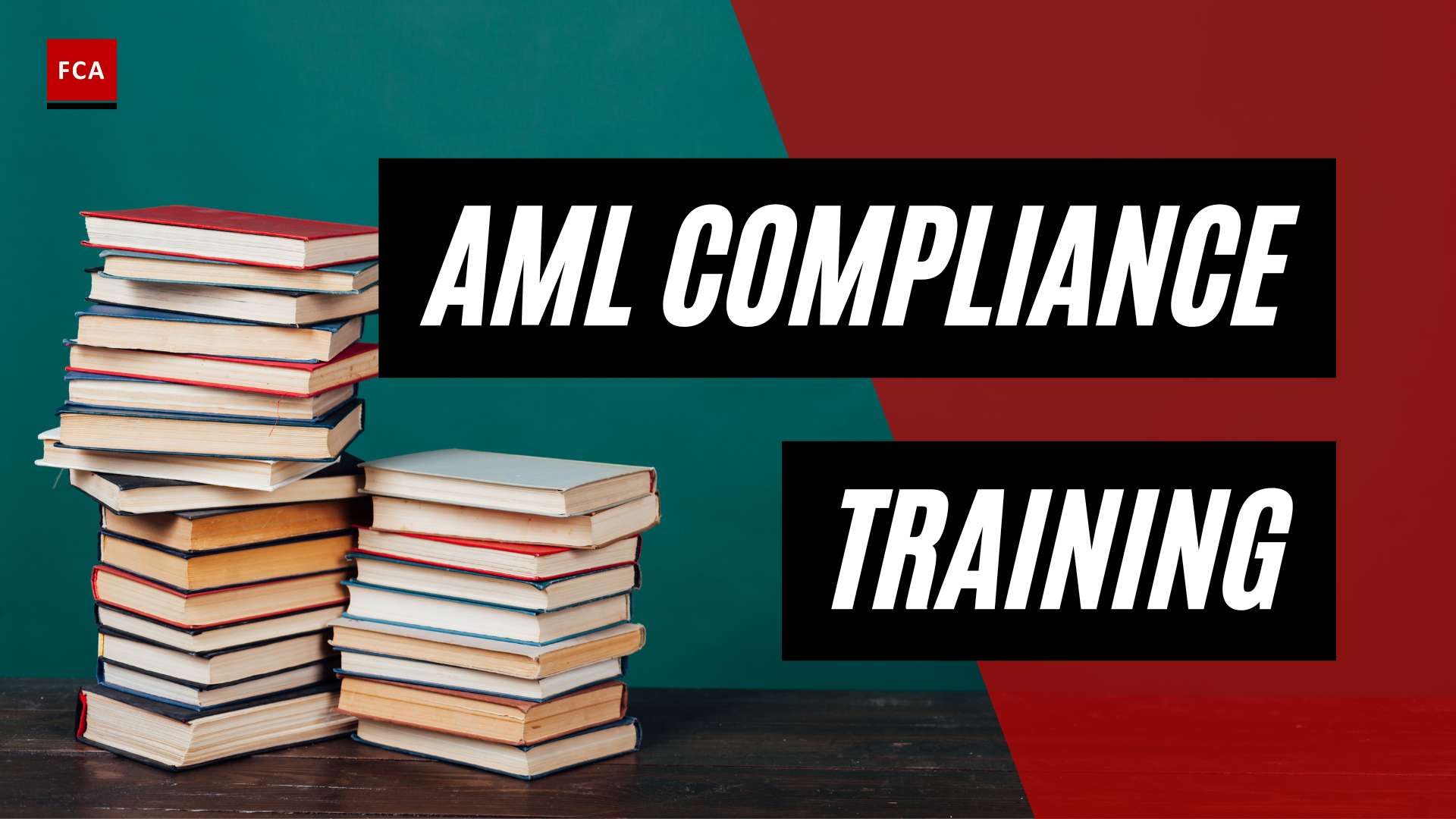Introduction to AML Compliance
To combat the rising threat of money laundering and terrorist financing, financial institutions must adhere to Anti-Money Laundering (AML) compliance frameworks. AML compliance is a crucial aspect of the financial industry, ensuring that institutions have robust measures in place to detect, prevent, and report suspicious activities. Two key pieces of legislation in the United States that establish AML requirements are the USA PATRIOT Act and the Bank Secrecy Act.
Importance of Anti-Money Laundering (AML) Compliance
The importance of AML compliance cannot be overstated. Money laundering poses significant risks to the integrity of the financial system, allowing criminals to legitimize illicit funds and finance criminal activities. By implementing effective AML compliance programs, financial institutions can help safeguard their operations, protect their customers, and contribute to global efforts to combat money laundering.
Key objectives of AML compliance include:
- Detecting and preventing money laundering activities
- Identifying and reporting suspicious transactions
- Complying with regulatory requirements and obligations
- Mitigating reputational and legal risks
- Safeguarding the financial system from abuse
To achieve these objectives, financial institutions must have robust policies, procedures, and controls in place to monitor and detect potential money laundering activities. Compliance with the USA PATRIOT Act and the Bank Secrecy Act is essential for maintaining the integrity and security of the financial system.
Overview of the USA PATRIOT Act and Bank Secrecy Act
The USA PATRIOT Act (Uniting and Strengthening America by Providing Appropriate Tools Required to Intercept and Obstruct Terrorism Act) was enacted in response to the 9/11 terrorist attacks. It expanded the scope of the Bank Secrecy Act (BSA) and introduced several provisions to enhance AML efforts.
The Bank Secrecy Act, originally enacted in 1970, requires financial institutions to establish AML programs to prevent money laundering and report suspicious transactions. It sets forth various reporting and recordkeeping obligations that financial institutions must comply with. These include Currency Transaction Reporting (CTR) and Suspicious Activity Reporting (SAR), which play a crucial role in identifying potential money laundering activities and supporting law enforcement efforts.
Financial institutions, including banks, credit unions, broker-dealers, and money services businesses, must establish and maintain comprehensive AML programs consistent with the requirements of these acts. These programs generally include customer due diligence, customer identification procedures, recordkeeping, and ongoing monitoring.
Understanding the USA PATRIOT Act and the Bank Secrecy Act is vital for professionals working in compliance, risk management, anti-money laundering, and anti-financial crime roles. By staying informed about these legislative frameworks, professionals can help ensure the effective implementation of AML compliance measures within their organizations.
Customer Identification Program (CIP) Requirements
To combat money laundering and terrorist financing, the USA PATRIOT Act introduced the Customer Identification Program (CIP) requirements. The CIP is an integral part of the anti-money laundering (AML) compliance framework that financial institutions must adhere to. This section will delve into the understanding of the USA PATRIOT Act’s CIP and its key components.
Understanding the USA PATRIOT Act’s CIP
The USA PATRIOT Act’s CIP is a set of regulations that mandates financial institutions to establish and implement procedures for verifying the identity of customers. The objective is to ensure that financial institutions are able to accurately identify their customers and uncover any potential risks associated with money laundering or terrorist financing activities.
The CIP applies to various types of financial institutions, including banks, credit unions, broker-dealers, mutual funds, and futures commission merchants. By implementing a robust CIP, these institutions contribute to safeguarding the integrity of the financial system and protecting against illicit activities.
Key Components of the CIP
The CIP consists of several key components that financial institutions must incorporate into their AML compliance programs. These components include:
-
Customer Identification Procedures: Financial institutions must establish procedures to collect specific information from customers during the account opening process. This information typically includes the customer’s name, date of birth, address, and identification number, such as a Social Security Number or Tax Identification Number. These procedures should also address the identification and verification of beneficial owners for legal entity customers.
-
Verification of Customer Identity: Financial institutions are required to verify the information provided by the customer using reliable and independent sources. This may involve verifying documents, such as government-issued identification, utility bills, or credit reports. The level of verification required may vary depending on the risk profile of the customer and the type of account being opened.
-
Recordkeeping Requirements: Financial institutions must maintain records of the information obtained during the customer identification process. These records should include copies of identification documents and any additional information used to verify the customer’s identity. The records must be kept for a specified period, as mandated by regulatory requirements.
By adhering to these key components, financial institutions can establish a robust CIP that enables them to effectively identify and verify the identity of their customers. This, in turn, helps mitigate the risk of money laundering and other illicit activities within the financial system.
Understanding and implementing the CIP requirements is essential for financial institutions to comply with the USA PATRIOT Act and contribute to the overall efforts in combating financial crime. To further enhance AML compliance, financial institutions should also consider implementing AML compliance software solutions, stay updated with FINCEN regulations and guidance, and follow AML compliance best practices.
CIP Compliance Process
To adhere to the requirements set forth by the USA PATRIOT Act, financial institutions must implement a robust Customer Identification Program (CIP). The CIP compliance process involves several key components, including customer identification procedures, verification of customer identity, and recordkeeping requirements.
Customer Identification Procedures
Customer Identification Procedures are the initial steps taken by financial institutions to collect and verify customer information. These procedures are designed to ensure that the institution understands the true identity of its customers and can assess the potential risks associated with their accounts.
During the customer onboarding process, financial institutions are required to obtain specific information from customers, such as their full legal name, date of birth, address, and identification number. This information helps establish the customer’s identity and allows the institution to conduct further due diligence.
Financial institutions must establish risk-based procedures that are appropriate for their specific circumstances. This means that the level of scrutiny applied to customer identification may vary depending on the risk associated with the customer, the type of account, and the nature of the institution’s business. For more information on a risk-based approach to AML compliance, refer to our article on risk-based approach to AML compliance.
Verification of Customer Identity
Verifying the identity of customers is a critical step in the CIP compliance process. Financial institutions must employ reasonable procedures to ensure that the information provided by the customer is accurate and reliable.
Verification methods may include obtaining documents, data, or information from reliable sources, such as government-issued identification documents, utility bills, or credit reports. These documents can help confirm the accuracy of the customer’s identity information and assist in assessing the potential risks associated with the account.
It’s important for financial institutions to establish clear guidelines and procedures for verifying customer identity. By implementing a consistent and thorough verification process, institutions can mitigate the risk of identity theft, fraud, and money laundering.
Recordkeeping Requirements
As part of the CIP compliance process, financial institutions are required to maintain detailed records of their customer identification efforts. These records should include the customer’s identifying information, the methods used to verify their identity, and any relevant documentation obtained during the process.
Recordkeeping is crucial for demonstrating compliance with regulatory requirements and facilitating the reporting obligations outlined in the Bank Secrecy Act (BSA). Financial institutions must retain these records for a specified period, typically five years, and make them available to regulatory authorities upon request.
By maintaining accurate and thorough records, financial institutions can ensure transparency and facilitate the monitoring of customer transactions. This information is essential for fulfilling reporting obligations, such as Currency Transaction Reporting (CTR) and Suspicious Activity Reporting (SAR). To learn more about reporting obligations under the USA PATRIOT Act, refer to our articles on currency transaction reporting requirements and suspicious activity reporting (SAR).
In summary, the CIP compliance process involves customer identification procedures, verification of customer identity, and recordkeeping requirements. By following these guidelines and maintaining meticulous records, financial institutions can fulfill their obligations under the USA PATRIOT Act and contribute to a robust anti-money laundering (AML) compliance framework.
Enhanced Due Diligence (EDD)
In the realm of AML compliance, Enhanced Due Diligence (EDD) plays a critical role in identifying and mitigating risks associated with money laundering and other illicit activities. This section will delve into the circumstances that warrant EDD and the steps involved in conducting it.
Circumstances Requiring EDD
EDD is typically triggered when certain risk factors are present. These risk factors can include but are not limited to:
- High-risk customers: Customers with characteristics that indicate a higher likelihood of involvement in money laundering or other illegal activities. This can include politically exposed persons (PEPs), individuals from high-risk jurisdictions, or customers engaged in high-value transactions.
- Unusual transaction patterns: Transactions that are inconsistent with a customer’s known profile or previous behavior. This can include large cash deposits, frequent and unexplained transfers, or transactions involving high-risk jurisdictions.
- Complex legal structures: Customers utilizing complex legal structures or offshore entities that can obscure the beneficial ownership of funds and make it difficult to assess the source of wealth.
- Non-face-to-face relationships: Customers who have limited or no physical presence, such as those conducting business solely through online channels, require additional scrutiny due to the increased risk of impersonation or fraudulent activity.
By identifying these circumstances, financial institutions can apply a risk-based approach to determine the level of EDD necessary for each customer. This allows for a more targeted and efficient allocation of resources while ensuring compliance with the USA PATRIOT Act’s requirements. For more insights into the risk-based approach, visit our article on risk-based approach to AML compliance.
Steps for Conducting EDD
Conducting EDD involves a thorough assessment of the customer, their activities, and their associated risks. The following steps are typically followed when performing EDD:
-
Gathering additional information: Financial institutions must collect and analyze additional information beyond what is typically obtained during the customer onboarding process. This may include verifying the source of funds, reviewing business relationships, and assessing the purpose of transactions.
-
Assessing beneficial ownership: Determining the ultimate beneficial owner(s) of an account or transaction is crucial in understanding the potential risks associated with a customer. Financial institutions must employ effective procedures to identify and verify the beneficial owner(s) to ensure transparency and mitigate the risk of hidden ownership.
-
Conducting enhanced monitoring: EDD requires ongoing monitoring of customer accounts and transactions to detect and report any suspicious activity promptly. This involves setting up alerts and employing advanced AML compliance software solutions to identify patterns or behaviors that deviate from the norm.
-
Documenting EDD measures: Financial institutions must maintain proper documentation of the EDD measures undertaken for each customer. This includes records of the information collected, the analysis conducted, and any decisions made based on the findings.
By following these steps, financial institutions can fulfill their obligations under the USA PATRIOT Act’s Customer Identification Program and contribute to the overall integrity of the financial system. To learn more about other reporting obligations under the Bank Secrecy Act, visit our article on currency transaction reporting requirements.
As part of an effective AML compliance program, conducting EDD is crucial for identifying and managing risks associated with money laundering and other illicit activities. By implementing robust EDD processes and staying up to date with the latest FINCEN regulations and guidance, financial institutions can strengthen their defenses against financial crime and contribute to a safer and more secure financial ecosystem.
Reporting and Monitoring Obligations
To ensure the integrity of the financial system and combat money laundering and terrorist financing, the USA PATRIOT Act imposes reporting and monitoring obligations on financial institutions. Two key requirements under the Act are Suspicious Activity Reporting (SAR) and Currency Transaction Reporting (CTR).
Suspicious Activity Reporting (SAR)
Financial institutions are obligated to detect and report any suspicious activity that may indicate money laundering, terrorist financing, or other illicit activities. The SAR process involves identifying transactions or patterns of behavior that are unusual or inconsistent with a customer’s known activities. It is essential for institutions to establish robust systems and procedures to monitor and identify suspicious activities.
Once a suspicious activity is identified, the financial institution must file a SAR with the Financial Crimes Enforcement Network (FinCEN), a bureau of the U.S. Department of the Treasury. The SAR provides detailed information about the suspicious activity, including the parties involved, the nature of the activity, and any supporting documentation or evidence. Filing a SAR allows law enforcement agencies to investigate and take appropriate action to combat financial crimes.
Currency Transaction Reporting (CTR)
Under the USA PATRIOT Act, financial institutions are required to report certain currency transactions to FinCEN through Currency Transaction Reports (CTRs). A CTR must be filed for any transaction involving cash or cash equivalents that exceeds $10,000 in a single business day. This includes deposits, withdrawals, exchanges, or transfers of currency.
The purpose of CTRs is to monitor and track large cash transactions to detect potential money laundering or illicit activities. By reporting these transactions, financial institutions contribute to the overall effort to combat financial crimes and ensure the transparency of financial transactions.
Financial institutions must maintain accurate records of CTRs and SARs for a designated period, typically five years. These records should be readily available for regulatory examinations, audits, or law enforcement investigations.
By adhering to the reporting and monitoring obligations under the USA PATRIOT Act, financial institutions play a vital role in safeguarding the integrity of the financial system and protecting against money laundering and terrorist financing activities.
For more information on reporting obligations and other anti-money laundering compliance measures, consider exploring our articles on currency transaction reporting requirements and bank secrecy act reporting obligations.
Staying Compliant with the USA PATRIOT Act
To ensure compliance with the requirements set forth by the USA PATRIOT Act’s Customer Identification Program (CIP), financial institutions and other entities must implement effective compliance programs and regularly train their staff. By doing so, they can stay vigilant in preventing money laundering and terrorist financing activities.
Implementing an Effective Compliance Program
In order to maintain compliance with the USA PATRIOT Act, organizations should establish a comprehensive compliance program that encompasses the CIP requirements. This program should include policies, procedures, and internal controls that outline the steps to be taken for customer identification, verification, and recordkeeping.
Key elements of an effective compliance program include:
-
Risk Assessment: Conducting a thorough assessment of the risks associated with money laundering and terrorist financing helps organizations identify and prioritize their compliance efforts. This risk-based approach enables them to allocate resources effectively and focus on high-risk areas.
-
Written Policies and Procedures: Clearly documented policies and procedures provide guidance to employees on how to perform customer identification, verification, and recordkeeping in accordance with the CIP requirements. These policies should be regularly reviewed and updated to reflect changes in regulations and industry best practices.
-
Designated Compliance Officer: Appointing a designated compliance officer responsible for overseeing the organization’s compliance with the CIP requirements ensures accountability and a centralized point of contact for compliance-related matters.
-
Ongoing Monitoring and Oversight: Regular monitoring and oversight of the compliance program help identify any gaps or weaknesses that need to be addressed. This includes conducting periodic internal audits and assessments to ensure adherence to the CIP requirements.
Regular Training and Internal Audits
Continuous training and awareness programs are essential to maintaining a strong culture of compliance within an organization. By providing regular training to employees, organizations can ensure that staff members are knowledgeable about the CIP requirements, understand the importance of compliance, and are equipped to effectively implement the necessary procedures.
Internal audits play a critical role in assessing the effectiveness of the compliance program and identifying areas for improvement. These audits should be conducted by independent internal audit teams or external auditors to ensure objectivity and thoroughness. The audit findings should be documented and shared with management to drive necessary changes and improvements in the compliance program.
By implementing an effective compliance program and providing regular training and internal audits, organizations can enhance their ability to meet the requirements of the USA PATRIOT Act’s CIP. This proactive approach helps mitigate the risks associated with money laundering and terrorist financing, safeguarding the financial system, and contributing to the overall security of the country.
For more information on AML compliance best practices and other relevant topics, be sure to check out our articles on AML compliance best practices, risk-based approach to AML compliance, and AML training and awareness.








